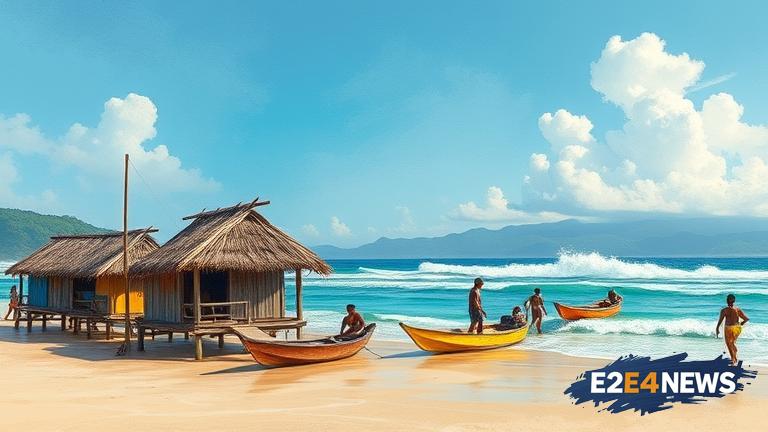The island of Siargao, located in the Philippines, has become a popular tourist destination in recent years, attracting visitors from all over the world with its beautiful beaches, crystal-clear waters, and vibrant surf culture. However, the rapid growth of the tourism industry has also brought about several challenges, including the displacement of local communities, environmental degradation, and unequal distribution of benefits. Many local residents have been forced to sell their land to make way for new resorts and hotels, leading to a loss of livelihood and cultural heritage. The influx of tourists has also put a strain on the island’s infrastructure, including its roads, water supply, and waste management systems. Furthermore, the tourism industry is largely controlled by outsiders, with many local businesses being pushed out by larger corporations. This has led to concerns about the island’s environmental and social sustainability, as well as the erosion of its unique cultural identity. Despite these challenges, the Philippine government has continued to promote Siargao as a tourist destination, touting its natural beauty and potential for economic growth. However, many locals argue that the government’s priorities are misplaced, and that more needs to be done to protect the island’s environment and support its local communities. Some have called for a more sustainable approach to tourism, one that prioritizes the needs of local residents and the environment over the interests of large corporations. This could involve implementing measures such as eco-tourism, community-based tourism, and environmental impact assessments. Additionally, there is a need for greater transparency and accountability in the tourism industry, including the disclosure of financial information and the involvement of local communities in decision-making processes. The Philippine government has also been criticized for its lack of support for local businesses and its failure to provide adequate infrastructure and services for tourists. Many locals feel that the government is more interested in attracting foreign investment than in supporting the local economy. The situation in Siargao is not unique, as many other tourist destinations around the world are facing similar challenges. However, the island’s unique cultural and environmental context makes it an important case study for sustainable tourism practices. The impact of tourism on local communities is a complex issue, and one that requires a nuanced and multifaceted approach. It is not just a matter of balancing economic growth with environmental and social concerns, but also of ensuring that the benefits of tourism are shared equitably among all stakeholders. In the case of Siargao, this will require a fundamental shift in the way that tourism is developed and managed, one that prioritizes the needs of local residents and the environment over the interests of large corporations. The future of Siargao’s tourism industry is uncertain, but one thing is clear: the island’s unique cultural and environmental heritage is worth protecting, and it is up to the government, local communities, and tourists themselves to ensure that this happens. The local government has implemented some measures to address the issues, such as the creation of a tourism board and the implementation of environmental regulations. However, more needs to be done to address the root causes of the problems, including the unequal distribution of benefits and the lack of support for local businesses. The Philippine government has also announced plans to develop a new tourism master plan for Siargao, which is expected to address some of the issues facing the island. However, the plan has been criticized for its lack of transparency and its failure to involve local communities in the decision-making process. The development of Siargao’s tourism industry is a complex issue, and one that requires a comprehensive and sustainable approach. It is not just a matter of attracting more tourists, but also of ensuring that the benefits of tourism are shared equitably among all stakeholders, and that the island’s unique cultural and environmental heritage is protected. The future of Siargao’s tourism industry will depend on the ability of the government, local communities, and tourists themselves to work together to address the challenges facing the island, and to develop a more sustainable and equitable approach to tourism.
